Nebraska’s popular archery spring wild turkey hunting season is just around the corner It opens on March 25. And, seemingly a growing number of hunters (like myself) have added another piece of legal archery equipment to their repertoire — the modern crossbow. The increasing popularity of crossbows for hunting and harvesting game is even showing up in Game and Parks surveys.
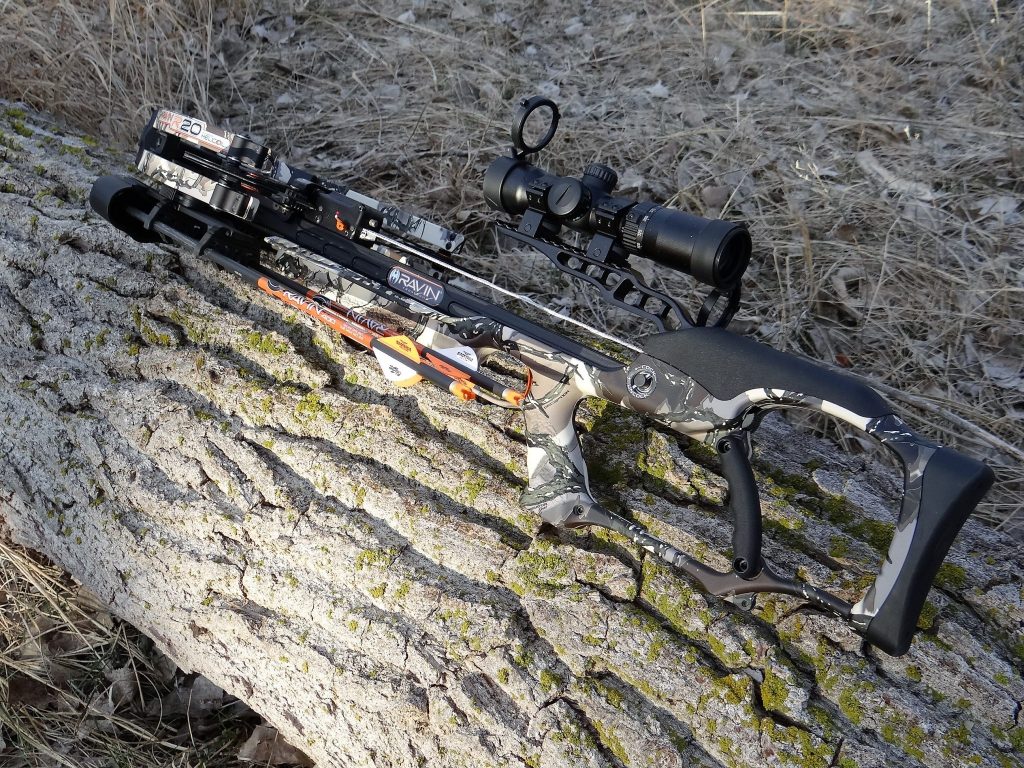
Some folks will be quick to let you know that a crossbow or arbalest is a firearm. That is not the case.
As defined in Webster’s Dictionary, a firearm is “a weapon from which a projectile can be discharged by an explosion caused by igniting gunpowder.” The last time I checked, crossbows did not use gunpowder or any other exploding or propelling substance or electronics to fire a projectile. For the record, the new airbow on the market is a rifle-shaped gun, powered by compressed air that shoots an arrow and has no limbs, string, etc. thus not meeting the definition of a bow.
Let me be the first to tell you that I thoroughly enjoy hunting with a crossbow but it’s not as easy as you think it is. Besides having to be horizontally-conscious with the shape of the instrument, the crossbow hunter must possess the same abilities, knowledge, woodcraft and nearly all of the same shooting skills as the conventional compound bow hunter. The crossbow will also need to be appropriately maintained like any other piece of hunting equipment. Follow the manufacturer’s guidelines. Keeping the rail lubricated and the string and cables waxed are particularly important.
Basic hunter safety rules apply when using a modern crossbow. However, the most important safety tip to remember regarding a crossbow is to keep your fingers and hands away from the drawstring when the crossbow is cocked. Accidents have happened and thumbs have even been severed during the firing process. Fingers and thumbs must be kept under the drawstring on the stock.
Interestingly, a 150-pound crossbow is the ballistic equivalent to a 65-pound vertical compound bow, except the crossbow has slightly more down range energy. The forward movement and strength of the crossbow’s limbs, combined with the length of the power stroke, determine the ballistic performance of the short arrow (bolt or quarrel) it launches. Ballistic tests show that there is very little, if any, difference in the impact of broadhead-tipped arrows shot from a crossbow and compound bow.
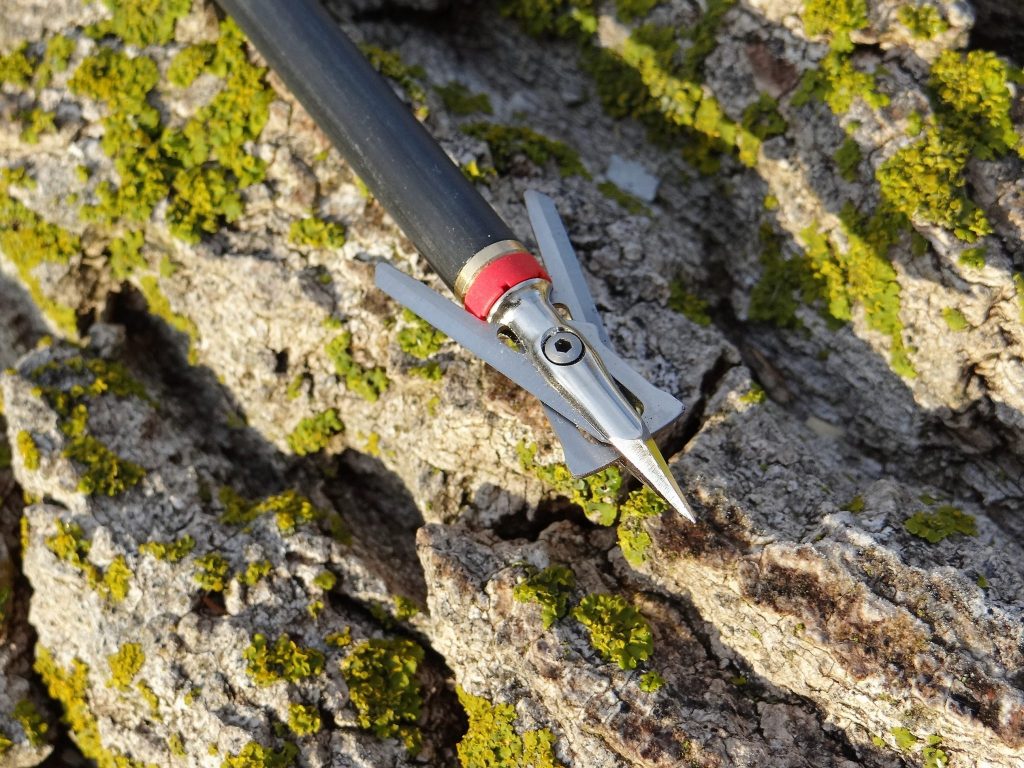
According to research done by Outdoor Life magazine, it turns out that, from a ballistics perspective, crossbows actually aren’t all that different from modern compound bows.
Essentially, the results of research indicate that the longer compound arrow shaft tends to fly straighter at longer distances; the heavier crossbow bolt is typically quicker and tends to retain slightly more downrange energy than the compound arrow, but sheds its velocity at a faster rate.
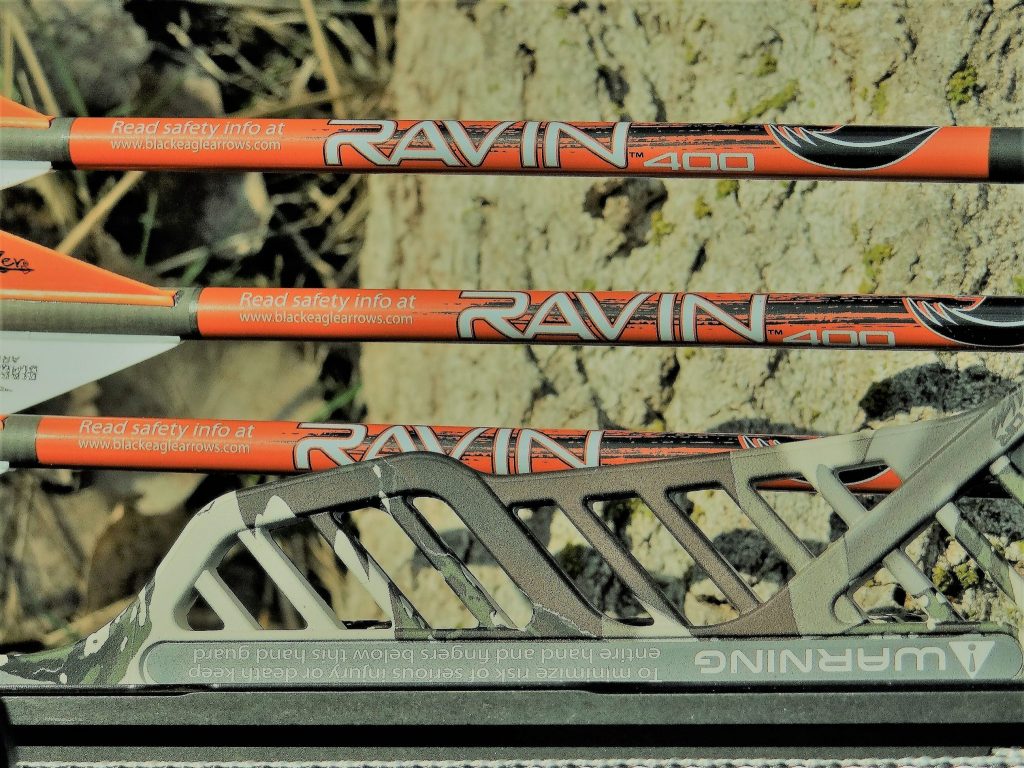
Any experienced, seasoned crossbow hunter will point out that there are many ways to make a bad shot with a crossbow. Trust me, I have done it though I have never lost a bird.
Harvesting a wild turkey with a crossbow is also not an easy task.
I had a learning curve when I first picked up a crossbow for spring wild turkey hunting several years back. I thought: This will almost be like shooting a gun. WOW! I was wrong. You have to make sure you have a good rest on a solid object. You just can’t shoot it like a compound bow. If a gobbler is coming from right to left (I am right-handed), it is sometimes hard to get the bi-pod shooting sticks and crossbow swung around and situated from a seated position in a ground blind. You’ll need to “aim small” for proper shot placement and have some things going in your favor when you’re turkey hunting with a crossbow.

I would go so far as to say that the effective range of a crossbow for turkeys is right at or just slightly beyond that of a compound bow shot, even with a scope. Modern crossbows are available with bolt speeds anywhere from 265 to well over 400 fps. The common thinking by the average user is the faster the arrow speed the flatter and farther it can be shot, thereby increasing the distance that game like turkeys can be taken. Nevertheless, regardless of a crossbow’s bolt speed, most average, recreational crossbow hunters are in agreement that any shot at live game over 40 yards is purely an unethical one. Hunters need to recognize their personal limitations, know their gear and how it performs.
That stated, the technological advances of crossbows though have been amazing, and an expanding number of hunters are opting to try the variants of this centuries-old weapon for various reasons.
Lightweight, ultra-narrow, more conveniently shaped then ever, super accurate out-of-the-box with precision construction and magnification, today’s crossbows reflect tremendous versatility and easy use in the field for turkeys whether in a portable ground blind or on a spot and stalk in the woods.
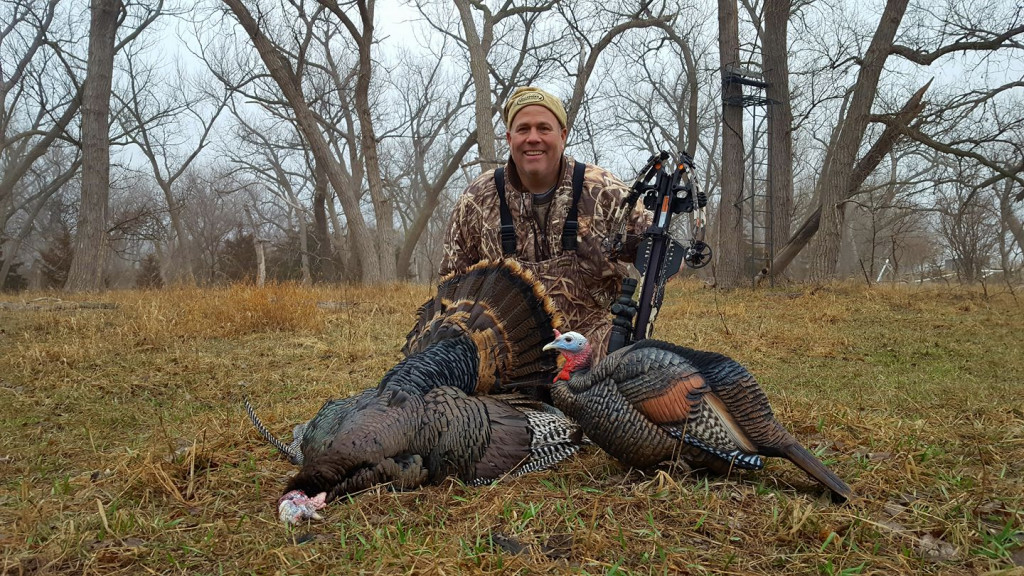
Many avid crossbow hunters will inform you that one particular advantage of the crossbow is that you do not have the added movement of raising higher, drawing back and holding a vertically-based compound, recurve, stick or longbow. No drawing motion exists. You can simply crank or pull the string, pre-cock and load a bolt with a broad head in the crossbow once in your blind or at your hunting spot. With the drawing motion excluded, the prone shooting position becomes possible with crossbow hunting opening up a barrage of new ambushing locations such as grass or stubble fields.
In terms of accessories, shooting sticks (bi-pod or tripod) that a hunter already has most likely can be utilized or a mono-pod system can even be integrated to the stock of some crossbows. Certain crossbows even have adjustable stocks. Modern crossbows are also outfitted with safety and anti-dry fire devices.
Yet another advantage of the crossbow comes in the form of a compactness and reduced width of the limbs. The newer crossbows have sleek designs which allow for minimal movement. These modern crossbows are not cumbersome in blinds and are quite maneuverable with your back against a large tree. And, of course, they are quieter than a shotgun blast. Should a hunter miss their target while shooting the crossbow, there’s a reasonable chance that the other game in the area did not hear the shot and reloading is a strong possibility. Lighted nocks on crossbow bolts are a huge advantage when it comes to bolt retrieval. Almost inevitably, the blot will pass through that bearded wild turkey.
I have found that crossbows allow for nice, comfortable shots with three points of contact established with no difficulty. Assisted stability without the use of muscles allows for longer holding times on target. Without muscle fatigue a factor, tighter shooting groups will result.
Bulky clothing interferes with strings and form on that of compound or traditional bow. With a crossbow, bulky clothing or gloves/mitts are usually not an issue. Also, since a crossbow is preloaded before a hunter gets cold, muscles are not required to energize the bow.
Ranging in price from about $400 for a simple entry-level model to as much as $3,000 for a precision-engineered, high-performance model, the modern crossbow is being enjoyed by a growing number of spring turkey hunters. Believe it or not, there are mini in-line vertical crossbows on the market with 150-pound draw weights.
First, with an easy-pull component, crank or push-button mechanization, you can cock your crossbow with little effort. This allows small-framed individuals, especially kids, plus physically challenged and older hunters with permanent shoulder, joint or upper body disorders, an opportunity to be in the field during an archery hunting season in Nebraska that they otherwise may not have been afforded.
Hunters, such as myself, who have difficulty pulling back a compound bow due to some aged shoulder issues can continue to hunt during these archery seasons, thanks to the modern crossbow.
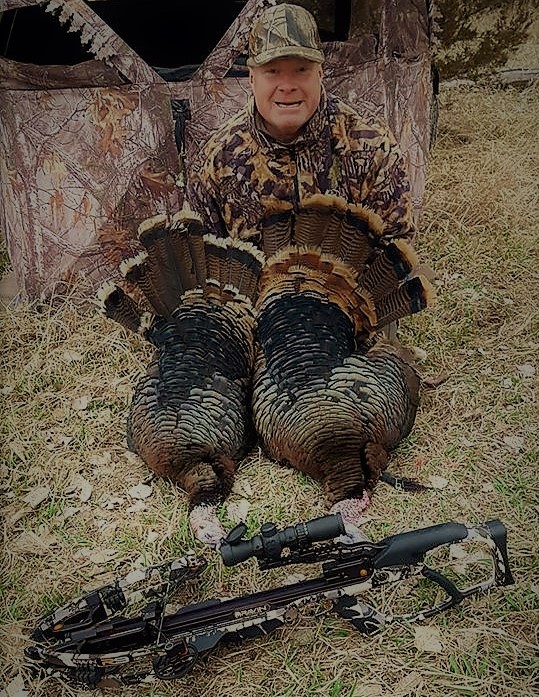
With its historical flair from the Middle Ages, the refined, modern crossbow is now enabling youth to hunt the spring archery turkey hunting season in Nebraska at a much younger age.
At least with a crossbow, a shot can be steadied with the assistance of a rest. Additionally, some youngsters may not participate in a hunt because they’re scared of the recoil and loud bang of a shotgun or are unable to pull back and hold a compound bow. The crossbow eliminates these problems because of an uncomplicated-loading device, cocking apparatus and a much calmer fire.
What’s more is that crossbow shooters can become proficient out to 40 yards within minutes of trying one, without the rigid practice regime of vertical bow shooting. With shooting rests and pre-calibrated scopes, accurate shots at 20 yards are quickly setup and executed.
So, with a crossbow where do you aim on a turkey?
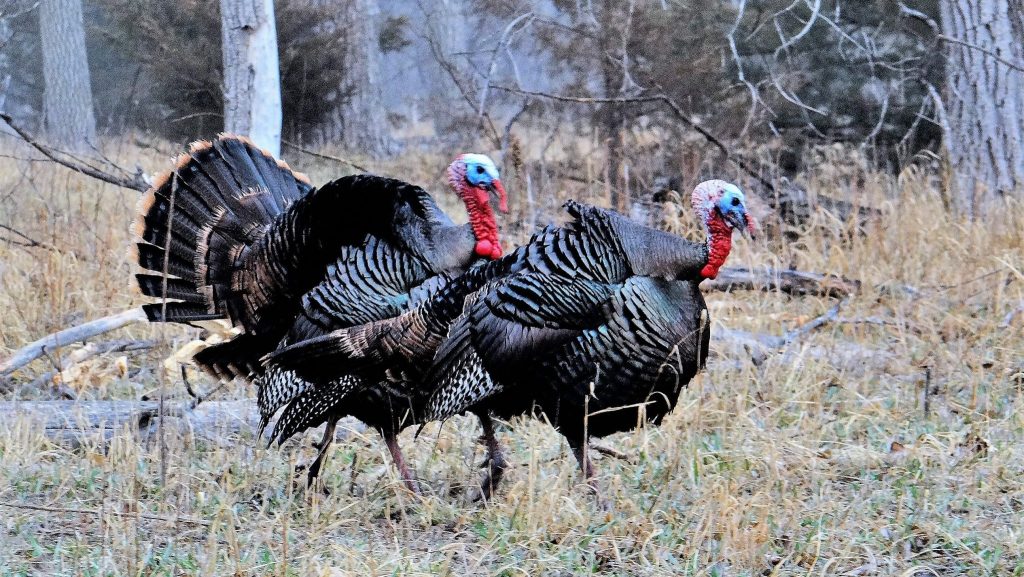
When a turkey is facing straight towards you, I would recommend passing on that shot. I nearly lost a big gobbler with a frontal shot close to its beard. The breasts of the bird are low and up front and do not possess much blood flow. Turkey hunting experts say though to place your bolt between the base of the beard and the base of the neck for a successful shot.
As we are seeing, crossbows are, in effect, introducing more and more kids to the wonderful outdoor lifestyle of hunting and keeping them there, while other folks are benefiting as well. The use of a crossbow for a youth spring wild turkey hunt fits perfectly into the Game and Parks Commission’s new Take ‘Em Hunting program!
In order to secure the future of hunting and wildlife management for generations to come, we must simply get more hunters in the woods, and, in my opinion, the modern crossbow is one of those hunting tools that can do just that!
Try a crossbow for your own archery wild turkey hunting in Nebraska this spring! It’s a challenging, fun and unique hunt!
You can get info on this year’s spring wild turkey hunting season here.
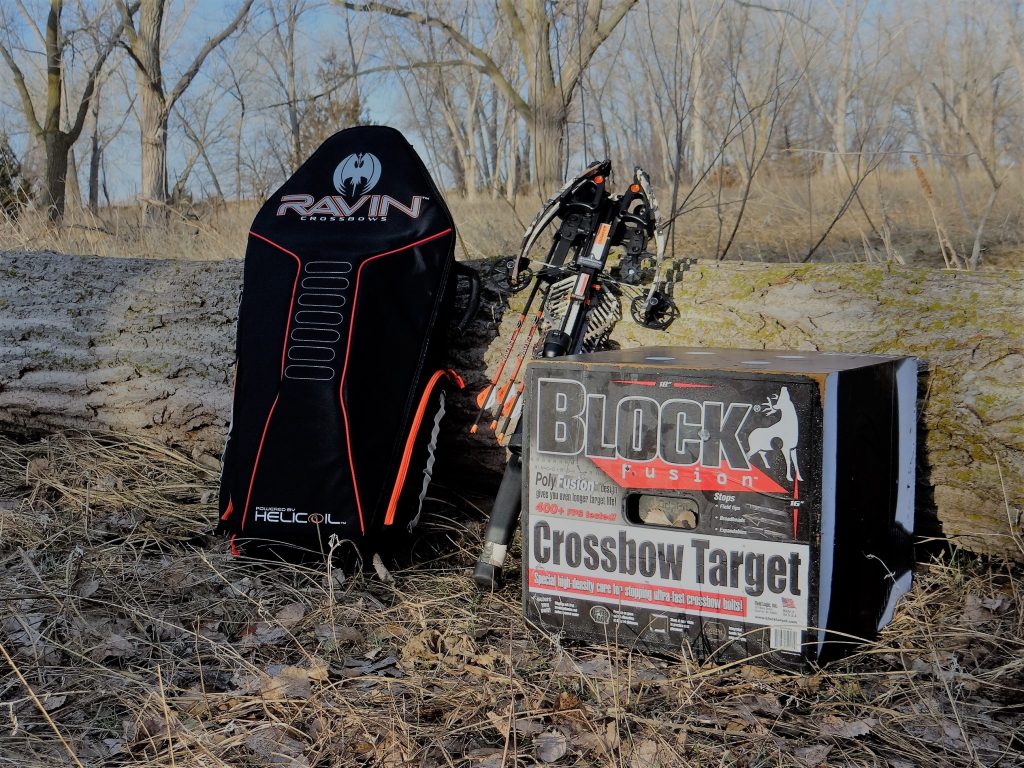
The post Crossbow for Spring Wild Turkey Hunting appeared first on Nebraskaland Magazine.
















